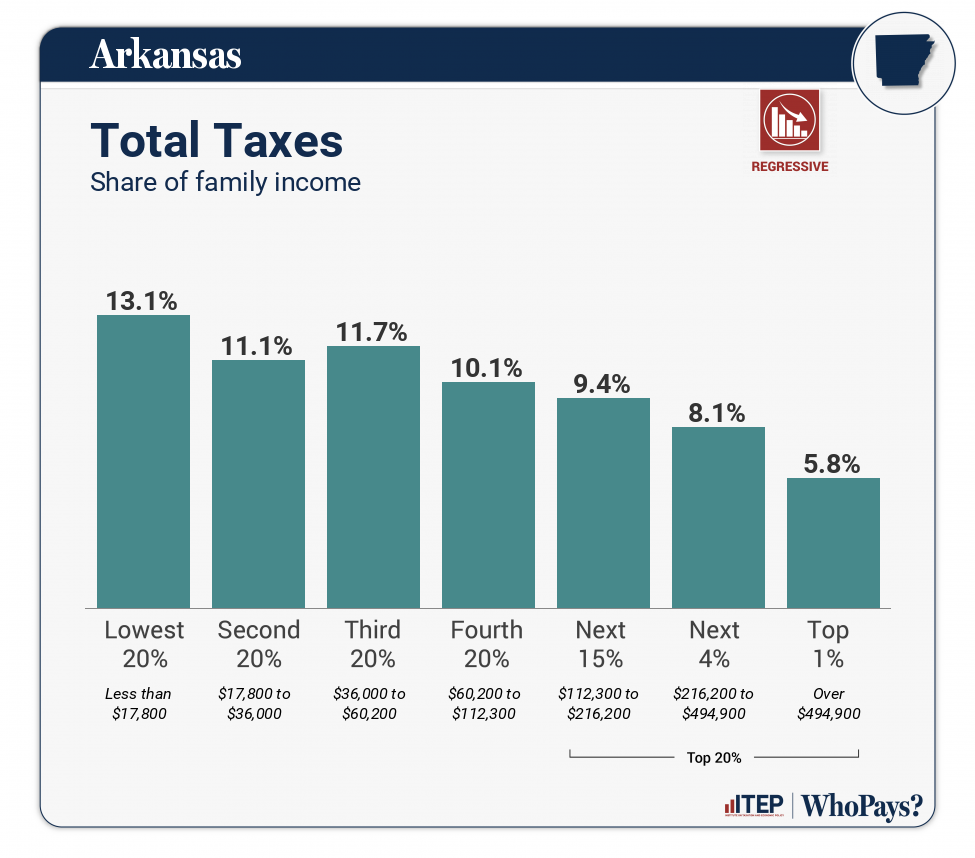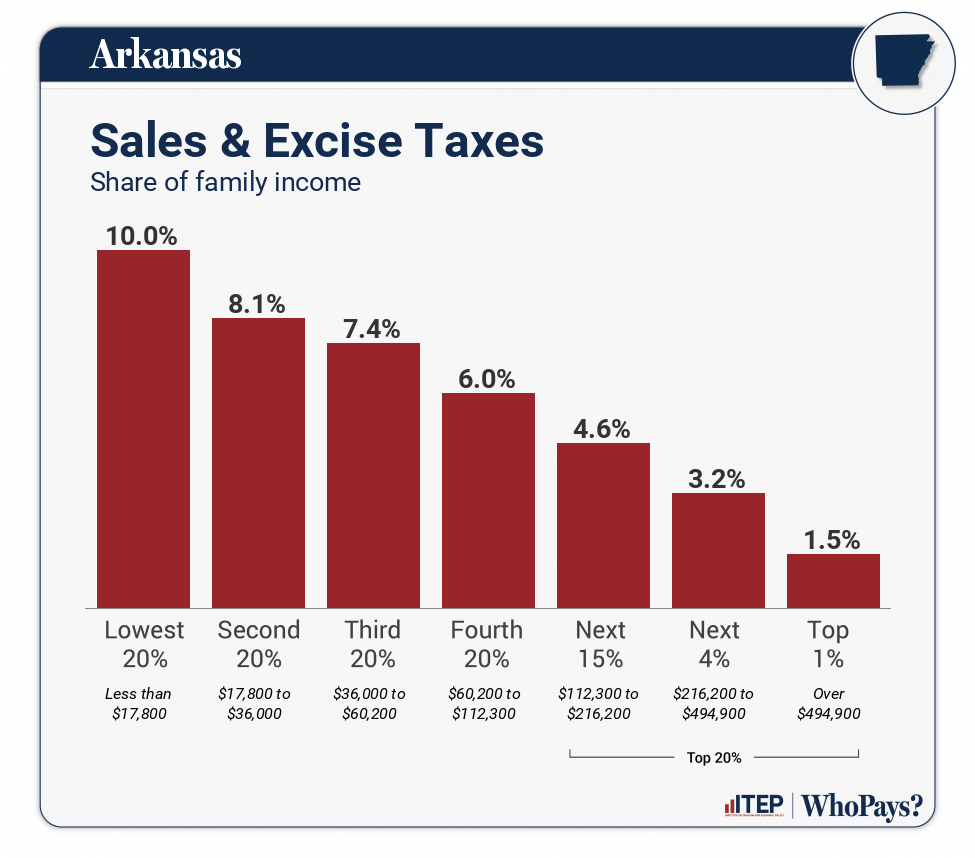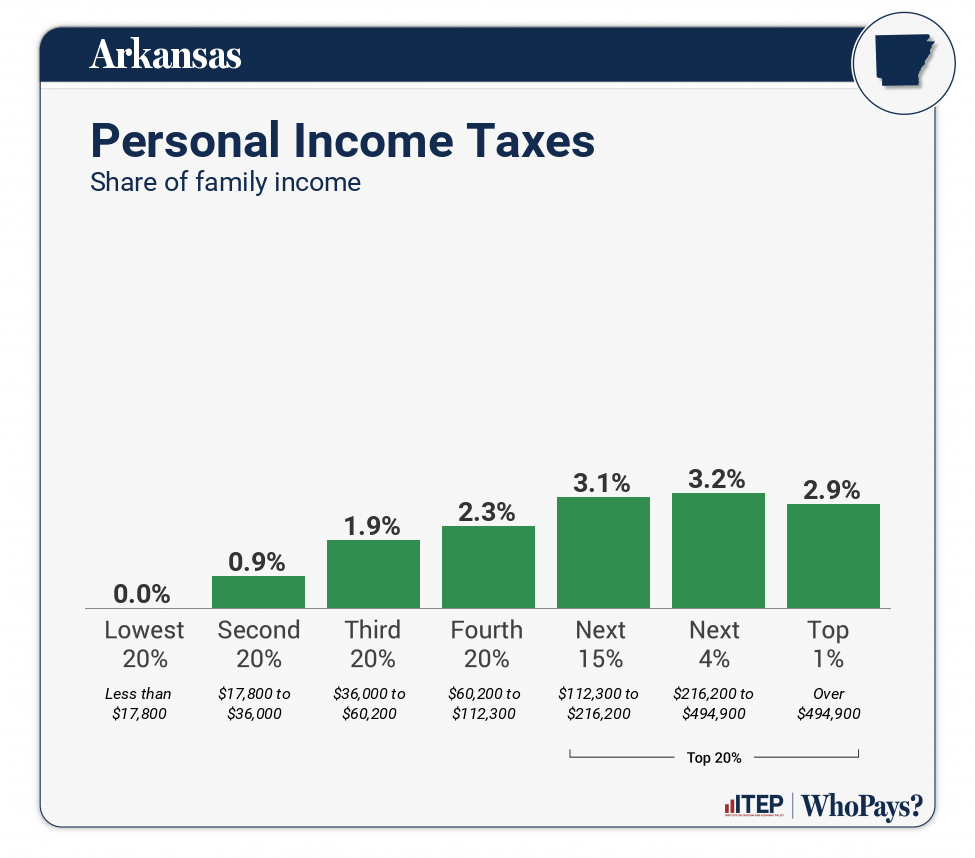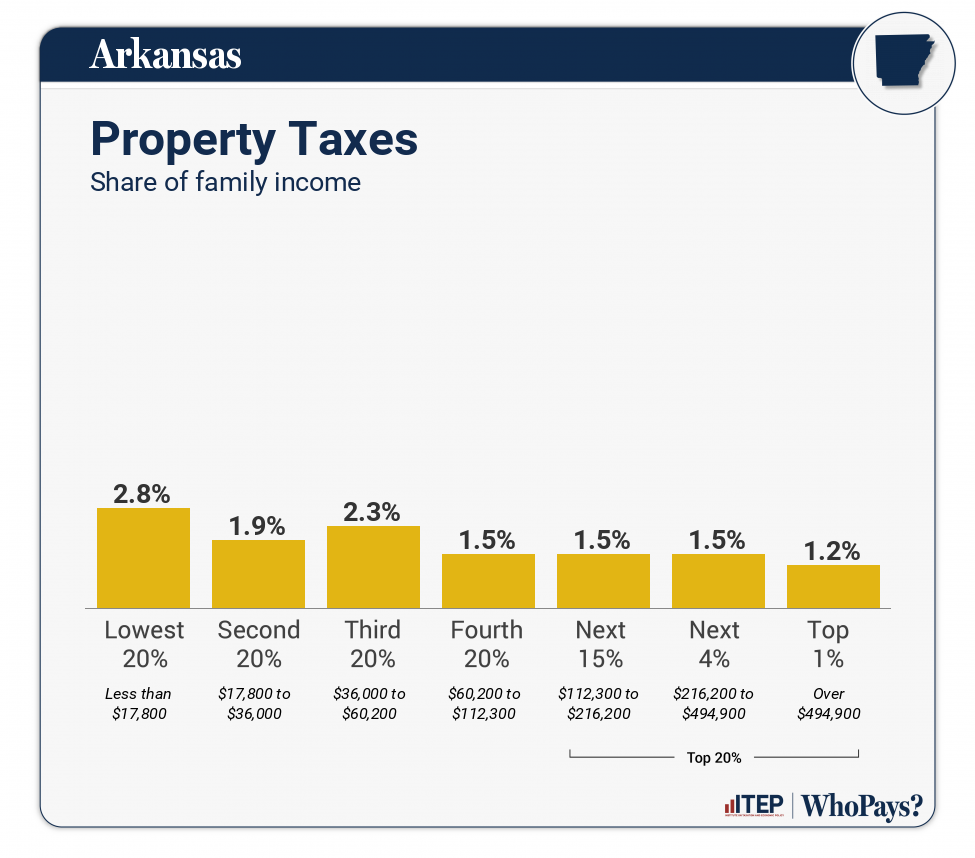Arkansas: Who Pays? 7th Edition

Arkansas
Download PDF
All figures and charts show 2024 tax law in Arkansas, presented at 2023 income levels. Senior taxpayers are excluded for reasons detailed in the methodology. Our analysis includes nearly all (99.5 percent) state and local tax revenue collected in Arkansas. As seen in Appendix D, recent legislative changes have significantly increased the regressive tilt of Arkansas’s tax system. The top 1 percent of earners received the largest tax cuts, at 1.5 percent of income, and the state moved 6 spots in the ITEP Inequality Index rankings, from 15th to 9th most regressive.
State and local tax shares of family income
| Top 20% | |||||||
| Income Group | Lowest 20% | Second 20% | Middle 20% | Fourth 20% | Next 15% | Next 4% | Top 1% |
| Income Range | Less than $17,800 | $17,800 to $36,000 | $36,000 to $60,200 | $60,200 to $112,300 | $112,300 to $216,200 | $216,200 to $494,900 | Over $494,900 |
| Average Income in Group | $10,300 | $26,500 | $45,600 | $83,400 | $144,100 | $292,000 | $1,416,700 |
| Sales & Excise Taxes | 10% | 8.1% | 7.4% | 6% | 4.6% | 3.2% | 1.5% |
| General Sales–Individuals | 5.3% | 4.9% | 4.6% | 3.8% | 2.9% | 1.9% | 0.5% |
| Other Sales & Excise–Ind | 2.9% | 1.6% | 1.2% | 0.8% | 0.5% | 0.3% | 0.1% |
| Sales & Excise–Business | 1.8% | 1.6% | 1.6% | 1.4% | 1.2% | 1% | 0.9% |
| Property Taxes | 2.8% | 1.9% | 2.3% | 1.5% | 1.5% | 1.5% | 1.2% |
| Home, Rent, Car–Individuals | 2.4% | 1.6% | 1.9% | 1.2% | 1.2% | 1.1% | 0.3% |
| Other Property Taxes | 0.4% | 0.3% | 0.4% | 0.3% | 0.3% | 0.4% | 0.8% |
| Income Taxes | 0.1% | 1% | 1.9% | 2.4% | 3.2% | 3.2% | 3% |
| Personal Income Taxes | 0% | 0.9% | 1.9% | 2.3% | 3.1% | 3.2% | 2.9% |
| Corporate Income Taxes | 0% | 0% | 0% | 0% | 0% | 0% | 0.1% |
| Other Taxes | 0.2% | 0.2% | 0.1% | 0.1% | 0.1% | 0.1% | 0.1% |
| TOTAL TAXES | 13.1% | 11.1% | 11.7% | 10.1% | 9.4% | 8.1% | 5.8% |
| Individual figures may not sum to totals due to rounding. | |||||||
ITEP Tax Inequality Index
ITEP’s Tax Inequality Index measures the effects of each state’s tax system on income inequality. According to this measure, Arkansas has the 9th most regressive state and local tax system in the country. Income disparities are larger in Arkansas after state and local taxes are collected than before. (See Appendix B for state-by-state rankings and the report methodology for additional detail.)
Tax features driving the data in Arkansas
|
Graduated personal income tax structure, though top rate applies to taxpayers with taxable income over $25,000 (single) so a large share of families face top rate
Two non-refundable low-income tax credits
Levies a business franchise tax
|
|
|
Income tax exclusion equal to 50 percent of capital gains income, fully excludes gains above $10 million
State sales tax base includes groceries, though taxed at a lower rate
No property tax “circuit breaker” credit for low-income taxpayers
Does not use combined reporting as part of its corporate income tax
Comparatively high combined state and local sales tax rates
Comparatively high reliance on sales and excise taxes
Local sales tax bases include groceries
No Earned Income Tax Credit (EITC)
|




